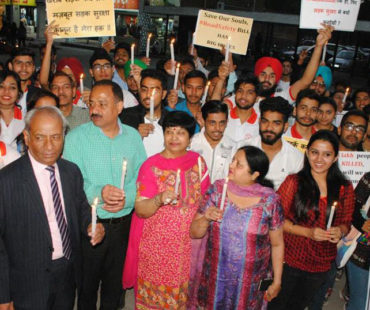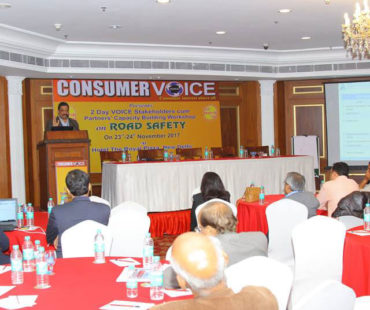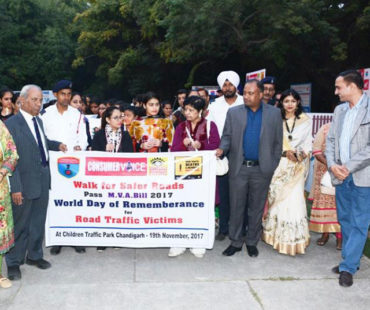National Centre for Human Settlements and Environment (NCHSE), in collaboration with Consumer Voice, New Delhi, joined hands with Ankur Higher...
test ticker
[t4b-ticker]

World Consumer Rights Day – Shifting to Clean Energy for a Greener and Cleaner World-for testing
World Consumer Rights Day – Shifting to Clean Energy for a Greener and Cleaner World-for testing

BY ASHIM SANYAL, COO CONSUMER VOICE
World Consumer Rights Day was inspired by John F Kennedy, who was the first leader to send a special message on 15 March 1962 to the US Congress in which he formally discussed consumer rights concerns.
In 1983, it was first marked by the consumer revolution and now mobilizes every year because of important issues and campaigns
which is now celebrated every year on March 15 as World Consumer Rights Day (WCRD) raising global awareness of consumer rights, consumer protection and empowerment.
This year the theme of WCRD 2023 will be: Empowering Consumers Through Clean Energy Transitions. In India too the day is being celebrated by the Department of Consumer Affairs and other organizations.
Global energy crisis is looming large with energy shortages, increased prices of oil and other economic factors especially after the pandemic. However, the energy crisis deepened following Russia’s invasion of Ukraine in February 2022. This had an untold impact on vulnerable consumers and also on climate change. The International Energy Agency (IEA) said the world faces its first “truly global energy crisis” in addition to unaffordable energy bills. It added that unaffordable energy bills remain a huge problem, driven up as the exports of oil and gas have been restricted.
Why is Clean Energy Transition the need of the hour?
Currently most of the global energy is depended on excessive use of non-renewable sources of energy like coal and gas which in turn puts a strain on our water and oxygen resources by causing pollution. Fossil fuels contribute to almost 75 percent of global greenhouse gas emissions and nearly 90 percent of all carbon dioxide emissions. It is therefore imperative to prevent deadliest impact of climate change to reduce greenhouse gas emissions by almost half by 2030 and reach net-zero by 2050.This should be seen as a turning point for speeding up the world’s transition to green energy.
The clean energy transition means shifting energy production away from sources that release a lot of greenhouse gases, such as fossil fuels, to those that release little to no greenhouse gases. Nuclear power, hydro, wind and solar are some of these clean sources.
One must realize that the shift to clean and sustainable energy resources will involve shift of resources between industrial sectors and local governments. Governments must quickly adapt to the use and disbursing of renewable energy as availability and quality of renewable resources vary.
Stakeholders in this process have varying degrees of political and economic power, and understanding how political economic factors influence clean energy transitions is crucial to effective policy formulation and facilitating transitions to sustainable energy systems. A ‘clean energy transition’ refers broadly to a substitution of technologies and associated fuel inputs across the full set of energy subsectors and consumers of energy, both as intermediates and final goods.
India’s clean energy transition
No one needs a net zero world more than the world’s largest and oldest democracy- India. India has huge potential for green transition investments such as solar, hydro or wind.
However, a clean energy transition is highly unlikely to occur on its own. Political economy considerations take a leading role. India and China are cases in point. In 2009, it is fair to say that India’s negotiation strategy aimed to position climate change as a developed country problem. In contrast, India’s INDC (Intended Nationally Determined Contributions) offers serious attempts to reduce the carbon intensity of its GDP. China has gone further, offering to peak emissions by 2030 with declines thereafter.
However in 2019 India announced that it would take up its installed capacity of renewable energy to 450 GW by 2030. The Production Linked Incentive Scheme (PLI) scheme is another initiative of the Government of India with respect to enhancing the manufacturing sector for the production of raw materials for renewable energy. Offshore wind too has been given a new lease of life through recent government reforms and targets. With a coastline of about 7,600 km, offering the potential to install ~195GW of offshore wind capacity, the segment can contribute to India’s clean energy target.
A latest report of Institute for Energy Economics and Financial Analysis, India’s renewable energy capacity is projected to grow rapidly with 35-40 GW added annually through to the fiscal year 2029/30. Installed renewable energy capacity (including large hydro) rose from a few megawatts (MW) in 2010 to ~163 gigawatts (GW) as of August 2022. India’s ambitious renewable energy targets and the associated policy and reform framework have been an important tailwind for the sector’s development.
“The good news is that the lifeline is right in front of us,” says UN Secretary-General António Guterres, stressing that renewable energy technologies like wind and solar already exist today, and in most cases, are cheaper than coal and other fossil fuels. We now need to put them to work, urgently, at scale and speed.
Food
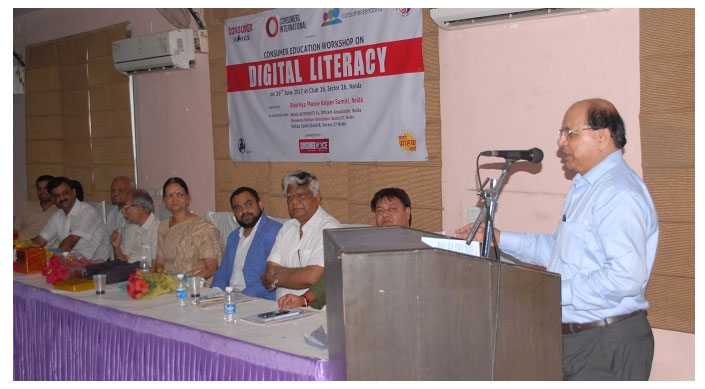
Digital Literacy, Training of Trainers Workshop – June 29, 2017
Digital Literacy, Training of Trainers Workshop – June 29, 2017
In continuation of Digital Literacy Initiative project activities supported by Anne Frasen Fund of Consumentonbond and Consumers International,Consumer VOICE organized Second Digital Literacy Workshop based on Training of Trainers model at club 26 ,Noida,Sector 27 (Uttar Pradesh) on 29th June 2017.The purpose of this workshop was to make Consumers digitally literate and also to boost their confidence to join the digital economy and society.

In the workshop various topics were covered such as digital accessibility, how to be safe online and ensuring digital security and privacy, related legal rights and available redressal avenues etc by different speakers from Consumer VOICE Team including Shri Gopal Ravi Kumar,Shri Subas Tiwari and Shri Hemant Upadhyay and Digital Expert –Shri Agam Chaudhary.
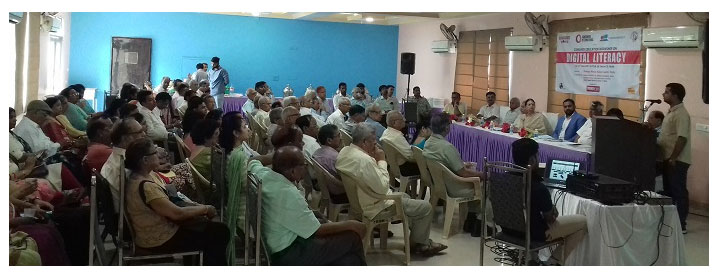
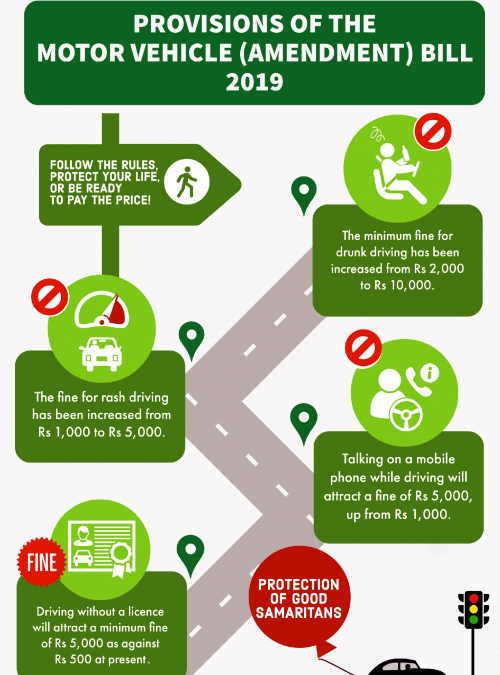
Trans-fat and Hypertension
Error: Contact form not found.
NATIONAL ROAD SAFETY WEBINAR
Nitin Gadkari, the Road Transport, Highways, and MSME Minister said road fatalities can be reduced by 50 per cent by 2025 as against the target of 2030 while addressing a webinar organised by Consumer VOICE along with the other partners of the Road Safety Network. The webinar was organised on September 1, 2020 to mark the completion of one year of Motor Vehicles Amendment Act 2019. Read More
ROAD TO MOTOR VEHICLES AMENDMENT ACT 2019
LIST OF INCREASED PENALTIES UNDER MOTOR VEHICLE AMENDMENT ACT 2019

| Section(Old Section) | Old Provision/Property | New Proposed Provision/Minimum Penalties | |
|---|---|---|---|
| 177 | General | Rs 100 | Rs 500 |
| New 177A | Rules of road regulation violation | Rs 100 | Rs 500 |
| 178 | Travel without ticket | Rs 100 | Rs 500 |
| 179 | Disobedience of orders of authorities | Rs 100 | Rs 500 |
| 180 | Unauthorized use of vehicles without licence | Rs 1,000 | Rs 5,000 |
| 181 | Driving without licence | Rs 500 | Rs 5,000 |
| 182 | Driving despite disqualification | Rs 500 | Rs 10,000 |
| 182 B | Oversize vehicles | New | New |
| 183 | Over speeding | Rs 400 | Rs 1,000 for LMV, Rs 2,000 for medium passenger vehicles |
| 184 | Dangerous driving penalty | Rs 1,000 | Up to Rs 5,000 |
| 185 | Drunken driving | Rs 2,000 | Rs 10,000 |
| 189 | Speeding/ Racing | Rs 500 | Rs 5,000 |
| 192 A | Vehicle without permit | Up to Rs 5,000 | Up to Rs 10,000 |
| 193 | Aggregators (violation of licencing conditions) | New | Rs 25,000 to Rs 1 lakh |
| 194 | Overloading | Rs 2,000 and Rs 1,000 per extra tonne | Rs 20,000 and Rs 2,000 per extra tonne |
| 194 A | Overloading of passengers | Rs 1,000 per extra passenger | |
| 194 B | Seat belt | Rs 100 | Rs 1,000 |
| 194 C | Overloading of two-wheelers | Rs 100 | Rs 2,000, disqualification of licence for three months |
| 194 D | Helmets | Rs 100 | Rs 1,000, disqualification of licence for three months |
| 194 E | Not providing way for emergency vehicles | New | Rs 10,000 |
| 196 | Driving without insurance | Rs 1,000 | Rs 2,000 |
| 199 | Offences by juveniles | New | Guardian/ owner shall be deemed to be guilty. Rs 25,000 fine with 3 years imprisonment. Juvenile to be tried under JJ Act. Registration of motor vehicle to be cancelled. |
| 206 | Power of officers to impound documents | Suspension of driving licences u/s 183, 184, 185, 189, 190, 194C, 194D, 194E. | |
| 210 B | Offences committed by enforcing authorities | Twice the penalty under the relevant section. |
SIX MAIN RISK FACTORS OF ROAD SAFETY
- Seat Belt
Seat belts dramatically reduce risk of death and serious injury. Among drivers and front-seat passengers, seat belts reduce the risk of death by 45%, and cut the risk of serious injury by 50%. People not wearing a seat belt are 30 times more likely to be ejected from a vehicle during a crash. More than 3 out of 4 people who are ejected during a fatal crash die from their injuries.
- Speed
The speed of motor vehicles is at the core of the road traffic injury problem. Speed influences both crash risk and crash consequence. The physical layout of the road and its surroundings can both encourage and discourage speed. Crash risk increases as speed increases, especially at road junctions and while overtaking – as road users underestimate the speed and overestimate the distance of an approaching vehicle.
- Helmet
The main risk factor for motorized two-wheeler users is the non-use of crash helmets. The lack or inappropriate use of helmets increase the risk of fatalities and injuries resulting from road crashes involving motorized twowheelers. Head injuries are a major cause of death, injury and disability among users of motorized twowheel vehicles. Many of these head injuries could have been prevented or their severity reduced through the use of simple and inexpensive helmets.
- Drink & Drive
Impairment by alcohol is an important factor influencing both the risk of a road crash as well as the severity of the injuries that result from crashes.
- Child Restraints
A child safety seat is a seat designed specifically to protect children from injury or death during vehicle collisions. Child restraints work in the same way as adult seat-belts.
- Mobile distractive driving
Using mobile phones can cause drivers to take their eyes off the road, their hands off the steering wheel, and their minds off the road and the surrounding situation. This cognitive distraction have the biggest impact on driving behaviour.
IMPACT
- We submitted a petition on December 2015 to the Honorable Minister Shri Nitin Gadkari and State Minister for an immediate introduction of Road Safety Bill in monsoon session at central level.
- At state level our partners have submitted petition to Transport Ministers of the respective states and copies have been sent to Shri Nitin Gadkari.
- We have received support from 58 Members of Parliament across all parties.
- Workshops and Candle Marches were held on World Day of Remembrance (WDR) for Road Safety across major states and cities in India like Chandigarh, Lucknow, Cuttack, Bhopal and Patna which were a huge success.
- Consumer VOICE organized Cyclothon (Cycle Rally) event on January 7, 2017 on the occasion of Road Safety Week at Nehru Park, Neeti Marg, Chanakyapuri, New Delhi. The theme of the Cyclothon was ‘Child Safety
and Safer Roads – Every Life Counts’. - The VOICE team also approached relevant ministries (Ministry of Road Transport and Highways and Ministry (MORTH) and Ministry of Consumer Affairs to push for the bill.
- World Day of Remembrance (WDR) was organised in 2015, 2016 and 2017 from 15th till 20th November in 10 states
- A National workshop was held on February 2015 to brief our state partners to garner support from MPs across states.
CAMPAIGN UPDATES
World Day of Remembrance 2023 in Bhopal, MP
World Day of Remembrance 2023 in Lucknow, UP
To commemorate the World Day of Remembrance (WDR) for road accident victims in 2023, Consumer Guild, in collaboration with Consumer VOICE New Delhi...
Road Safety – Gorakhpur, Uttar Pradesh Workshop
A stakeholders Consultation was organized by Consumer Guild with support from Consumer VOICE with Transport office & Traffic Police Gorakhpur...
Stakeholders’ Consultation on Road Safety in Madhya Pradesh
A stakeholders Consultation on Road Safety, was organised on 28th March 2023 at Bhopal, Madhya Pradesh as a part of Road Safety project activities...
MEDIA REITERATES OUR EFFORTS
⇨ Walk to create road safety awareness
November 18, 2019 | The Telegraph
Citizens on Sunday participated in a walk organised by … Read more
⇨ City observes World Day of Remembrance
November 18, 2019 | The Sentinel
Consumer’s Legal Protection Forum, Assam, Consumer VOICE, …. Read more
⇨ Road Safety Network urges the government to issue an ordinance on road safety
February15, 2019 | Business Standard
A day after the last session of the current Lok Sabha, the Road Safety Network … Read more
⇨ Citizens Awareness Group holds walk in memory of mishap victims
The Citizens Awareness Group here organized a walk which originated from … Read more
⇨ Citizens Awareness Group holds walk
Citizens Awareness Group, Chandigarh with support from Consumer Voice,.. Read more
WORLD REMEMBRANCE DAY (WDR) 2019
World Day of Remembrance 2019 “Life is not a Car Part” The World Day of Remembrance for Road Traffic Victims (WDR) is commemorated on the third Sunday of November every year – to remember the many millions killed and injured on the world’s roads, together with their families, friends and …. Read more

